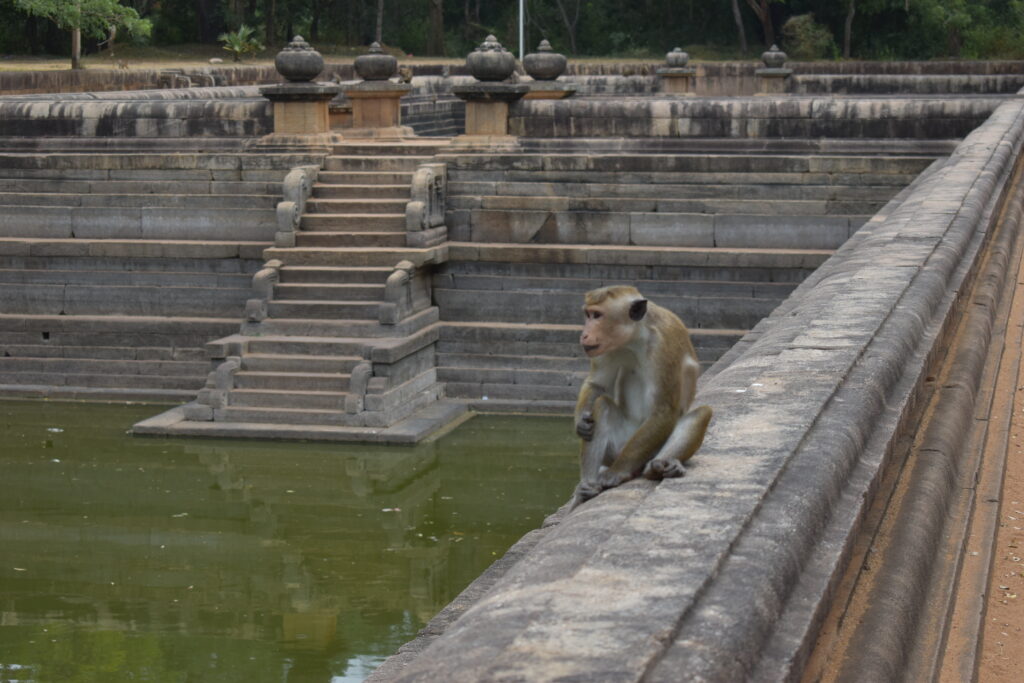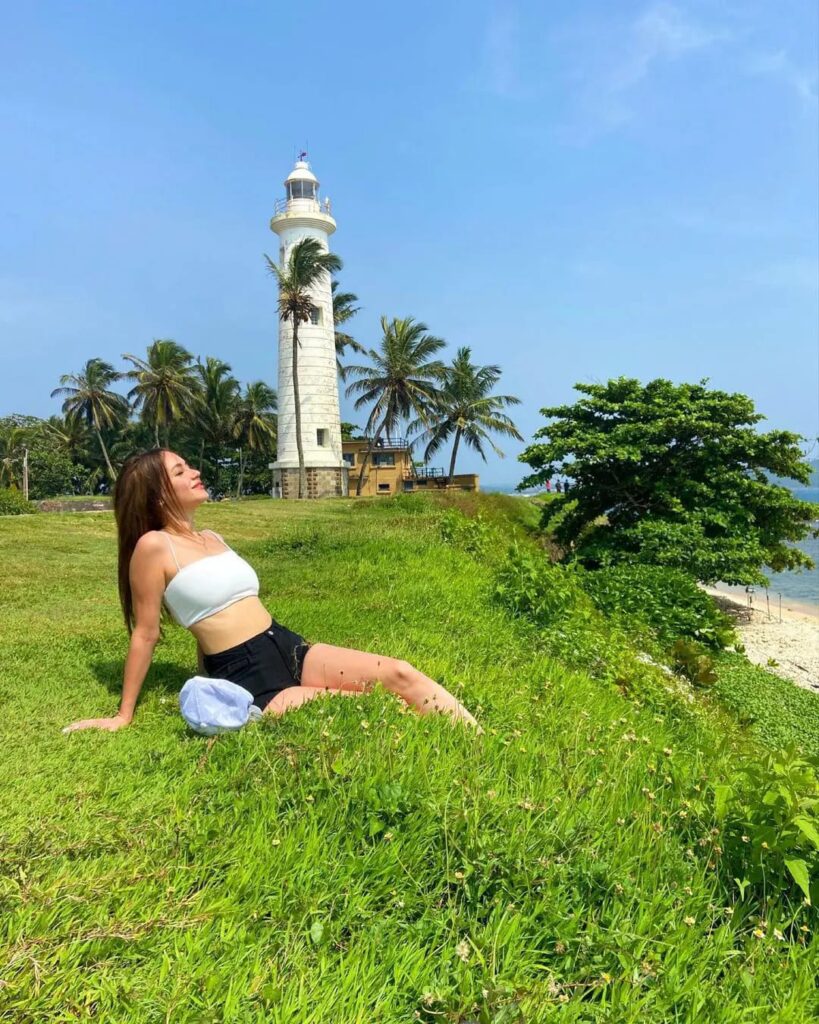Sri Lanka’s importance in the “maritime Silk Road” is relevant to its geographical position in the Indian ocean. The Silk Road, a trade route that originated from China’s western Han Dynasty and extended across central Asia, Europe, Africa, Egypt, and Greece Ships also landed to Sri Lanka because of Sri Lanka is considered as the major point of the historic international trading route of economic and cultural exchange between East and the West.
If you visit Buddhist temple in sri lanka you can see ancient pictures related to Budda’s Life, In those pictures, you can see Gods Devils, and Humans, If someone could say who had the devil faces are kind of tribe in sri lanka, yes They are tribe but in reality, they are not like the devil, they came from Indian Religion called Jaina and the people who believe that religion considers as devil. and other pictures you could see or you can hear Snake people or snakes, Snake world, they are not a tribe in sri Lanka, according to Some legendaries, and books there are They are naval, Travelers always stay nearby ocean, or sometimes they are inside of the country, but mostly they near to the ocean, there are so many definitions about this Snakes peoples, but professors who study history geography and archeology they identified those snake people came to Thambapanni (Sri lanka)from India east India, In Tibet, asam area has Mountains called NAGALAND and also from Kashmir of the east side of India.
Sri Lanka is an Island of south Asia, situated 50 km off the southern tips of India. Is separated from India by the Palk Strait. The shape of Sri Lanka evoked a vision of a teardrop on India’s cheek. it is also known as “Ceylon”, In history Aristotle, Strabo, and Claudius Ptolemy also mention Sri Lanka as Thaproban in their books.

“Serendip”,” Rathnadeepa” (isle of gems), the island figures as the focal point in the Ramayana legend of a Rama and Seth, and is said to have been blessed by three separate visits of Buddha to first Kelaniya, second-time Nagadeepaya and Mahiyanganaya.
The island impressed travelers, from the Chinese monk FaHsien(5th century AD) to Marco Polo (circa 1293) and still charms tourists of varied pursuit, persuasions and pleasure to this day with its myriad magical mysteries.
Trader and colonizers of the west, the Portuguese came in 1505 to trade in spices but assumed the rule of coastal areas until 1656, as did the Dutch who ousted them thereafter. The Dutch were in their turn displaced by the British in 1976, during this entire period of colonial contests and conquests. What followed was a period of nearly five hundred years during which the island came under the control and influence of the Portuguese, Dutch, and British. While the Dutch and Portuguese ruled over the maritime silk road for a rough 150 years each. The British stablished complete control over the island with the fall of the Kandyan Kingdom in 1815. They too ruled for 150 years before the country regained its independence in 1815. They came for a helping purpose and finally they conquered the island.
To get to know about Sri Lanka, and its history as a folklore, I wish those stories, that I heard and read since I was a child, will make you impressed by discover Sri Lanka with me.
Ancient Sanskrit literature refers to Sri Lanka as ‘Sinhaladvipa’ – Island of the Sinhalese. The people called by that name have inhabited this island from the earliest historical times. Traditions recorded in the historical chronicles of Sri Lanka trace the origin of the Sinhalese to an exiled North Indian prince, Vijaya, and his retinue, who settled down in the island and established the Sinhalese kingdom in the 6th c. B.C. Wever, the earliest recorded civilization dates back to 380 BC, when Anusadhapura (205 km from Colombo) was established as the first Capital City. Following the advent of Buddhism in the 3rd Century BC, a civilization rich in Indo-Aryan culture took root. It produced the great cities with their “dagabas” which compare, and even exceed in size, the pyramids of Egypt, palaces and pleasure gardens, rich art and architecture and the gigantic irrigation works, many of which are still in use today. With invasions from neighboring South India, the base of power shifted to Polonnaruwa (101 km South East of Anuradhapura) and other cities such as first recorded encounter with the traders and colonizers of the West, with the arrival of the Portuguese in 1505. What followed was a period of nearly five hundred years during which the island came under the control and influence of the Portuguese, Dutch and British. While the Portuguese and Dutch ruled over the maritime regions for a rough 150 years each, the British established complete control over the island with the fall of the Kandyan Kingdom in 1815. They too ruled for 150 years before the country regained independence in 1948. The impact of many cultures over the centuries, from South Indian to the Moorish and that of the western colonisers, have resulted in the country’s culture being enriched by a rich diversity, much of which is in evidence today. The island’s economy, has traditionally been based on agriculture, with rice as the main food crop. Spices such as cinnamon, cardamom, cloves, nutmeg and pepper have been age-old exports, as were gems and even peacocks and elephants. With western commercial influence, rice gave way to cash crops, until the British made tea the base of the economy. The new thrust in the economy is on export-led industry. Agriculture is now being revived. Non-traditional exports such as garments, seafood, foliage, cut flowers and tropical fish and value added agro-industries have in recent years contributed to the economic advance of Sri Lanka. The people of Sri Lanka are of diverse races and faiths. The majority are Sinhalese who are Buddhists, while among the minorities the Tamils, mainly Hindus are the largest, followed by the Moors who follow Islam, and a sharply declining number of Burghers, descended from the Portuguese and Dutch, who are Christians. There is also a considerable population of Christians among the Sinhalese and Tamils. Although well on the road to modernization, the country and its people still cherish most of their traditional values and take pride in their rich culture. An aspect that continues to attract visitors from abroad, as much as the beauty and diversity of scenery, and the warmth and hospitality of the people. Dambadeniya, Kurunegala, Kotte and Kandy.


